Scottish Schools Adolescent Lifestyle and Substance Use Survey (SALSUS): Smoking Report 2015
Report presenting the smoking findings from the 2015 wave of the Scottish Schools Adolescent Lifestyle and Substance Use Survey (SALSUS).
5 Family and home environment
Family attitudes to smoking
It was most common for regular smokers to say that their family did not know that they smoked (43%). A further quarter reported that their family tried to persuade them not to smoke (29%). Only a small proportion (6%) said that their family encouraged them to smoke (Figure 5.1).
There was no change in family attitudes to smoking between 2013 and 2015.
Figure 5.1 Family attitudes to smoking among 15 year old regular smokers (2015)
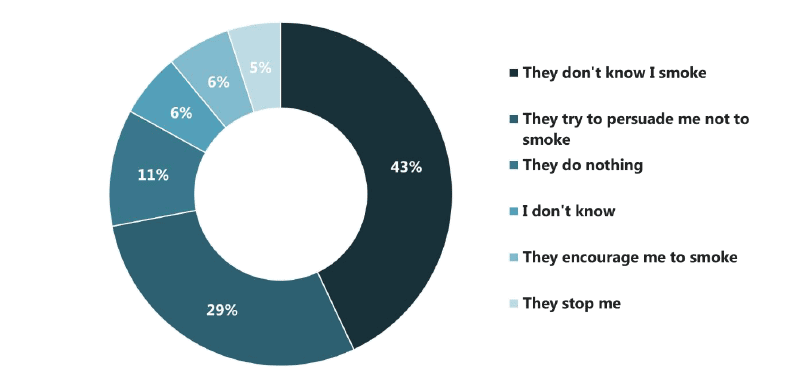
Base: 15 year old regular smokers (786)
Allowed to smoke at home
Over half of regular smokers (58%) were not allowed to smoke in the house. However, just under a third (30%) reported that they were allowed to smoke at home (either inside or outside of the house) [11] (Figure 5.2).
There has been no change between 2013 and 2015.
Figure 5.2 Whether 15 year old regular smokers allowed to smoke at home (2015)
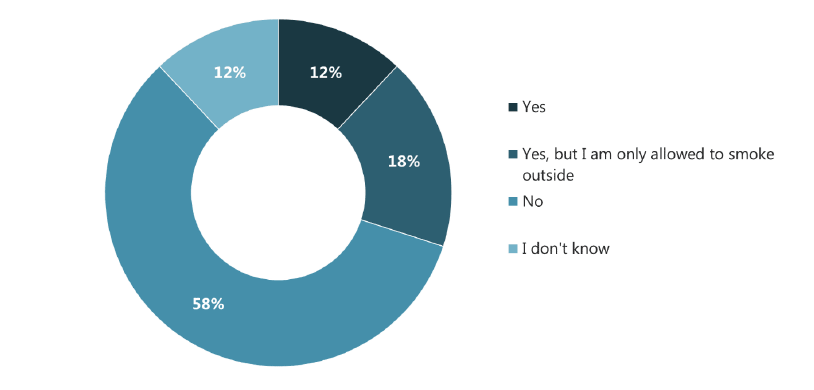
Base: 15 year old regular smokers (806)
Exposure to secondhand smoke
At home
Overall, 17% of pupils said that someone smoked inside their home every day/most days and a further 14% said it happened sometimes. 69% indicated that no-one ever smoked inside their home.
Between 2013 and 2015, the proportion of pupils exposed to smoke at home decreased: 24% were exposed every day/most days in 2013 compared with 17% in 2015.
Figure 5.3 Exposure to smoke at home, by age and year (2013-2015)
Q. Does anyone smoke inside your home? Please include times when someone smokes out of a window or at/just outside an open door.
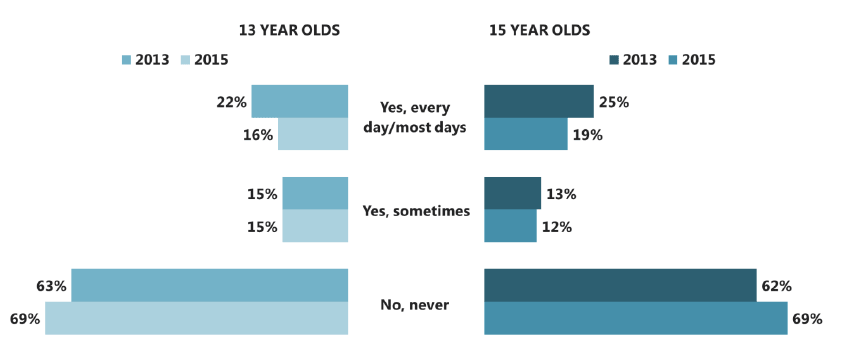
Base: all pupils (for full base sizes please see Appendix B)
In a car
Overall, 4% of pupils said that, when they were travelling by car, someone was smoking on all/most journeys and a further 12% said this happened sometimes. 81% said it never happened. [12]
Between 2013 and 2015, the proportion of pupils exposed to smoke in a car decreased: 7% were exposed on all/most journeys in 2013 compared with 4% in 2015.
Figure 5.4 Exposure to smoke in cars, by age, smoking status and year (2013-2015)
Q. When you are travelling by car, does anyone smoke inside the car? Please include times when someone smokes in the car with the windows open.
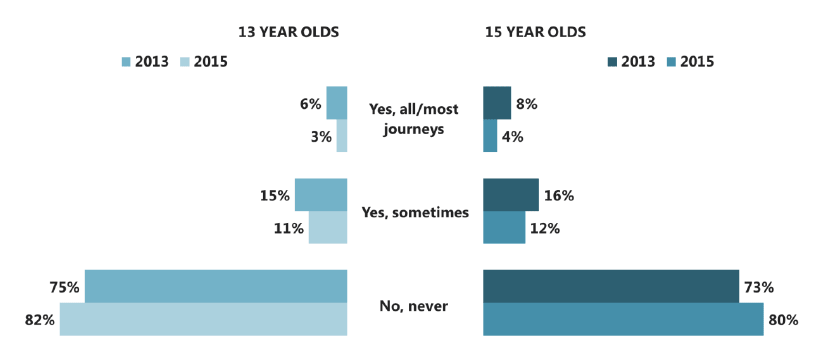
Base: all pupils (for full base sizes please see Appendix B)
Parental and sibling smoking
Whether pupils smoked was linked with whether their parents and/or siblings smoked.
Regular smokers were more likely than occasional smokers, and much more likely than non-smokers, to have at least one parent or a sibling who smoked daily. Occasional smokers were also much more likely than non-smokers to have at least one parent or a sibling who smoked daily (Figures 5.5 and 5.7).
The proportion of pupils with at least one parent or sibling who smokes daily has decreased markedly over time. The rate of decline was most marked between 2010 and 2015 (Figures 5.6 and 5.8).
Figure 5.5 Whether parents of 15 year olds smoke, by smoking status (2015)
Q. How often do each of the following people smoke?
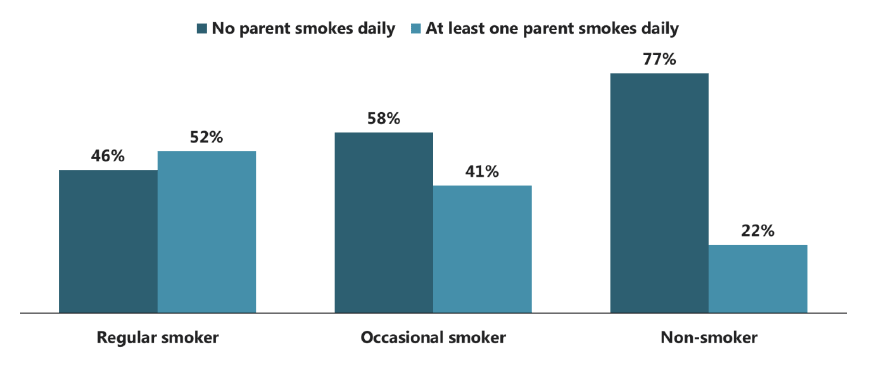
Base: 15 year old regular smokers (764), 15 year old occasional smokers (514), 15 year old non-smokers (9,912)
Figure 5.6 Trends in proportion of pupils with at least one parent who smokes daily, by age (2002-2015)
Q. How often do each of the following people smoke?
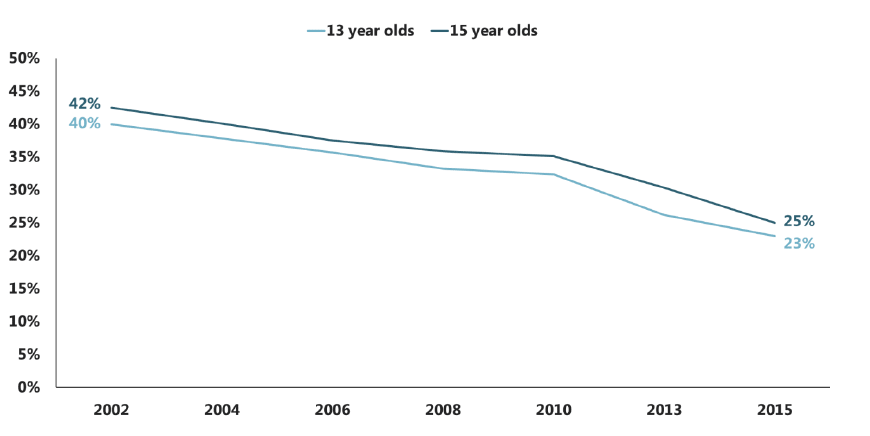
Base: all pupils (for full base sizes please see Appendix B)
Figure 5.7 Whether a sibling smokes (both ages), by smoking status (2015)
Q. How often do each of the following people smoke?
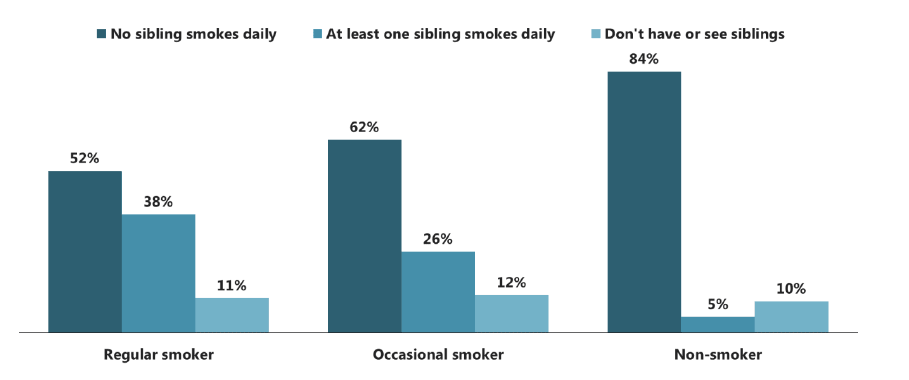
Base: all pupils (for full base sizes please see Appendix B)
Figure 5.8 Trends in proportion of pupils with at least one sibling who smokes daily, by age (2002-2015)
Q. How often do each of the following people smoke?
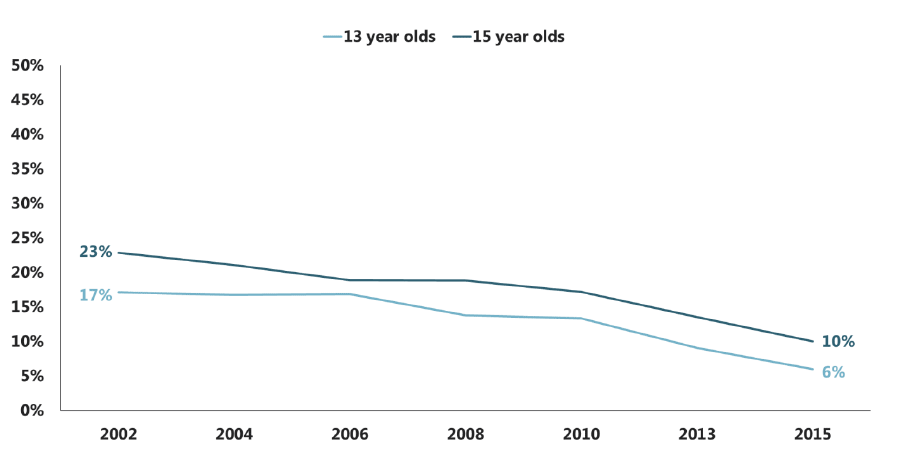
Base: all pupils (for full base sizes please see Appendix B)
Friends smoking
Among both age groups, regular smokers were much more likely than non-smokers to say that their friends smoked (Figure 5.9).
In line with the reduced prevalence of smoking, the proportion of all pupils who said that more than half their friends smoked decreased between 2002 and 2013. There was no further change between 2013 and 2015 (Figure 5.10).
There were few gender differences.
Figure 5.9 Whether friends smoke, by age and smoking status (2015)
Q. What about your friends - how many of them smoke?
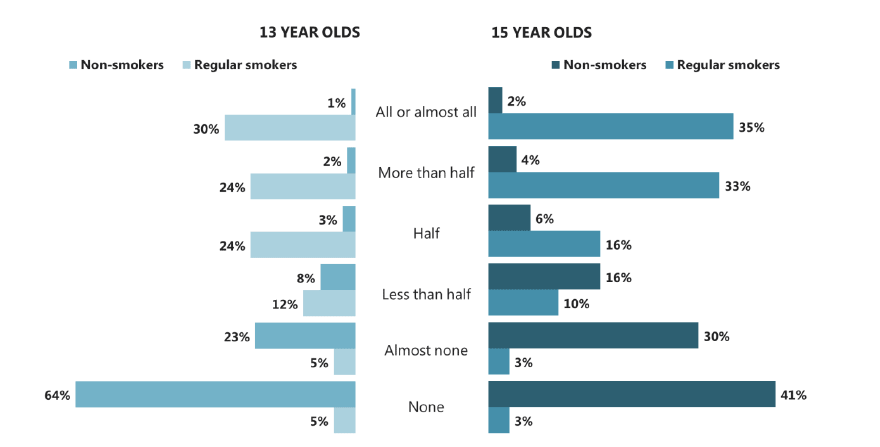
Base: 13 year old non-smokers (12,597), 13 year old regular smokers (199), 15 year old non-smokers (9,919), 15 year olds regular smokers (799)
Figure 5.10 Trends in the proportion of pupils who say that more than half their friends smoke, by age (2002-2015)
Q. What about your friends - how many of them smoke?
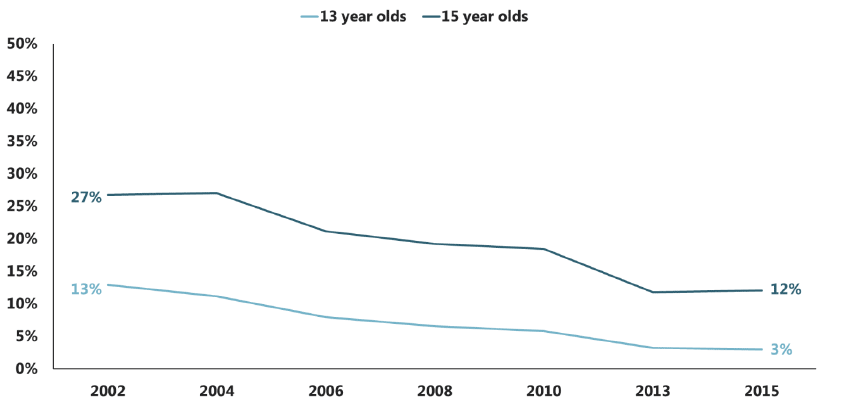
Base: all pupils (for full base sizes please see Appendix B)
Contact
There is a problem
Thanks for your feedback